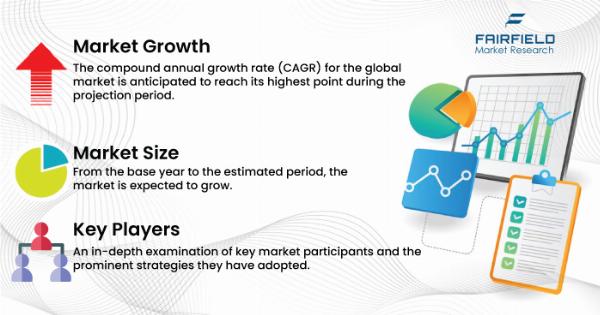Automotive Lighting Market Size, Share, and Industry Trends 2031

Strong 8k brings an ultra-HD IPTV experience to your living room and your pocket.
Strict lighting regulations in Europe and North America have significantly boosted the automotive lighting market. Vehicle lighting is crucial, especially when driving in heavy traffic and at night, as it enhances safety and visibility. Road accidents are a major concern for governments worldwide. According to the World Health Organization (WHO), 1.3 million people die annually due to road accidents, with most countries losing 3% of their GDP as a result. Enhancing driving conditions through improved lighting systems is essential for reducing these accidents. For instance, the Canadian Vehicle Lighting Regulation introduced new lighting standards in September 2021, including taillights with daytime running lights (DRLs), side marker lights that automatically turn on in the dark, and dark dashboards that alert drivers to turn on their lights. The purpose of DRLs is to help other road users see the oncoming vehicle rather than aiding the driver in seeing the road.
For Full Industry Insights: https://www.fairfieldmarketresearch.com/report/automotive-lighting-market
Impact of Daytime Running Lights (DRLs) on Road Safety
According to the U.S. Department of Transportation's National Highway Traffic Safety Administration (NHTSA), DRLs have reduced fatal road accidents by nearly 13.8%. Such regulatory legislation is expected to significantly impact the automotive lighting industry. Additionally, some U.S. states, including California, Kansas, and Arizona, allow neon underglow car lights with restrictions on color and location. For instance, Arizona permits only amber or white lights on the vehicle's side. Furthermore, many countries are actively taking steps to reduce CO2 emissions from vehicles. As a result, stringent safety and security regulations are expected to boost the growth of the automotive lighting market.
Investments in R&D and Innovation by Automotive Manufacturers
Automotive manufacturers are making substantial investments in R&D and innovation to develop lighting systems compatible with driver assistance systems and proximity sensors, increasing market demand. For example, Hella GmbH & Co. developed full-LED high beam headlamps for commercial vehicles using EdgeLight technology in 2021, providing a conspicuous flasher function to improve road safety and driver visibility.
LED: The Fastest-Growing Segment in Automotive Lighting
The LED segment is expected to be the fastest-growing in the automotive lighting market over the forecast period. LEDs' low energy consumption and high-power output compared to halogen lights are likely to drive growth. Leading manufacturers are focusing on developing advanced LED lights to replace halogen bulbs. For instance, Osram launched a new LED vehicle light series in December 2019, including headlights with integrated LED technology, low and high beams, turn indicators, position lights, and a daytime operating mode. Demand for LED lights is driven by consumers' growing preference for energy-efficient LED systems and stringent government regulations. Moreover, the advancement and integration of adaptive lighting with advanced driver assistance systems (ADAS) in upcoming autonomous vehicles enable vehicle-to-vehicle communication, reducing the number of road collisions.
Growth of Automotive Lighting Market in Asia Pacific
Asia Pacific is the largest user of automotive lighting and is expected to grow at the fastest rate throughout the forecast period. Factors such as growing vehicle production, an increase in luxury car sales, a rise in low-cost vehicle sales, and a corresponding increase in nighttime accidents drive regional expansion. Due to rapid consumer adoption and high automotive sales, Asia Pacific is expected to be the largest market in the global industry. China and Japan, with their substantial domestic automotive production and sales, hold the greatest market shares. Additionally, manufacturers in these countries prioritize technological advancements, including lighting, resulting in increased demand for vehicle lighting. Rising consumer per capita income and strong SUV sales in emerging markets like India further fuel the market.
The abundant supply of raw materials and the enormous demand for low-cost electrical and mechanical components from countries such as Japan, China, and India drive regional growth. The high demand for advanced lighting due to the rising sales of premium cars also contributes to this growth. For instance, the top 20 selling premium cars in China feature LED headlights, taillights, DRLs, and ambient lighting, with many top-selling vehicles in China equipped with LED DRLs and taillights per government regulations. The increasing adoption of modern lighting in lower and mid-segment vehicles is likely to create new opportunities for the automotive lighting market in this region over the forecast period.
Market Trends in North America and the Rest of the World
The rapid growth of the automotive lighting market in North America can be attributed to increased electric vehicle sales and the early adoption of ADAS features. For safety reasons, almost all top-selling passenger automobiles in the United States include LED DRLs. Additionally, the rest of the world holds a negligible share of the global market, but with increased awareness and acceptance of new technologies, these regions are expected to grow strongly during the forecast period.
Global Automotive Lighting Market: Competitive Landscape
In December 2021, Bosch launched new 4W (four-wheeler) lighting bulbs, the Gigalight 120, 150, Sportec Bright 4000K, and LED Retrofit, suitable for almost any vehicle. These bulbs provide motorists with the brightness needed to see road signs or obstacles ahead in any weather condition. In January 2022, HELLA launched the new Black Magic LED series in Europe, designed specifically for off-road applications with dustproof and waterproof features. These lights provide off-road illumination with up to 15,000 lumens depending on the variant.
Key players in the automotive lighting market include Denso Corporation, ZKW, Hella GmbH & Co. KGaA, Valeo, Hyundai Mobis, Stanley Electric Co., Ltd., Koito Manufacturing Co., Ltd., Robert Bosch GmbH, Koninklijke Philips N.V., and Osram GmbH.
Conclusion
The automotive lighting market is poised for robust growth driven by stringent government regulations, advancements in LED technology, and substantial investments in R&D. As the industry evolves, automotive lighting systems will play a crucial role in enhancing road safety and driving experiences, ensuring a bright future for the market.
Note: IndiBlogHub features both user-submitted and editorial content. We do not verify third-party contributions. Read our Disclaimer and Privacy Policyfor details.


